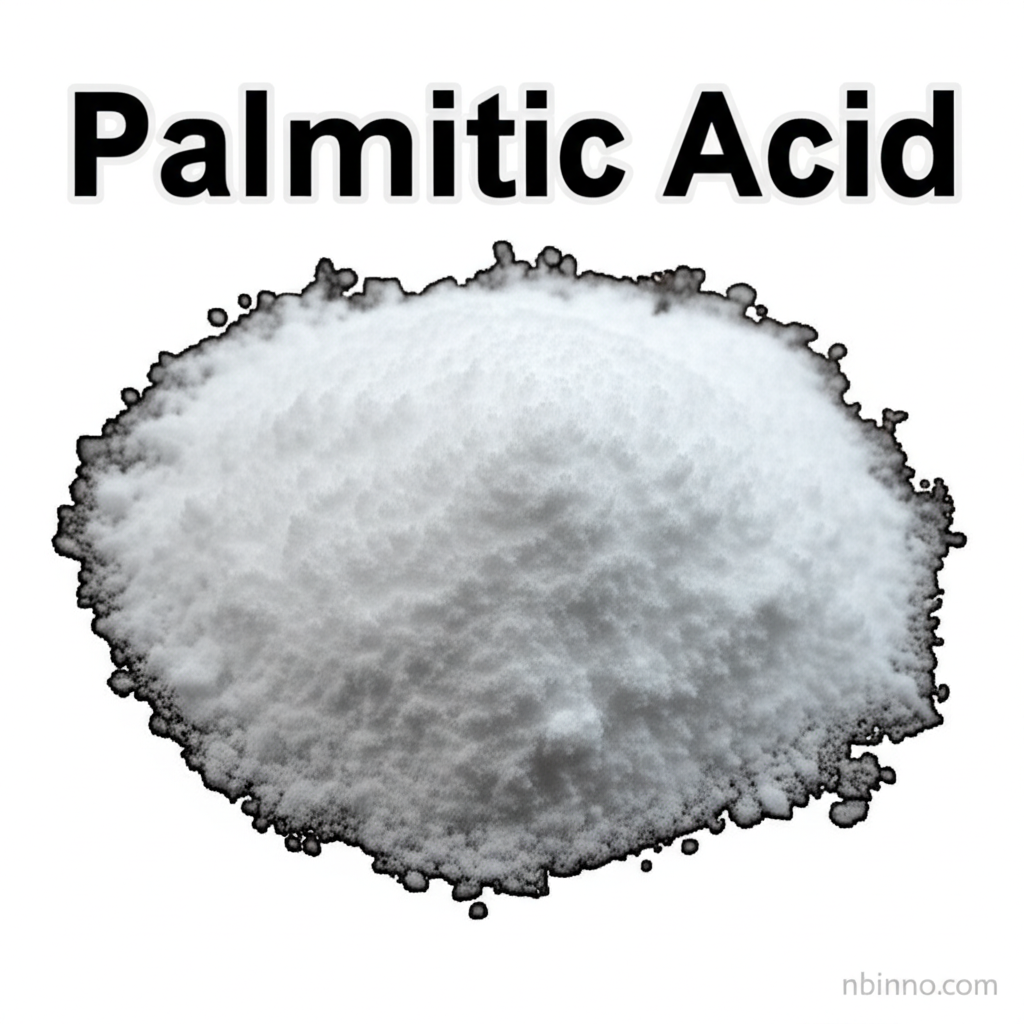Palmitic Acid (CAS 57-10-3): Properties, Applications, and Benefits
Discover the extensive uses and benefits of Palmitic Acid, a fundamental saturated fatty acid vital across industries.
Get a Quote & SampleProduct Core Value

Palmitic Acid
Palmitic acid is a saturated long-chain fatty acid with a 16-carbon chain, making it the most common saturated fatty acid found in animals, plants, and microorganisms. Primarily derived from palm oil, it is also present in significant amounts in meats, cheeses, butter, dairy products, cocoa butter, olive oil, and soybean oil. Its widespread presence and versatile chemical properties make it a cornerstone ingredient in numerous industrial and consumer applications.
- Introduction to Palmitic Acid: Understanding the chemical properties of Palmitic Acid reveals its role as a foundational oleochemical.
- Industrial Applications of Palmitic Acid: The utility of palmitic acid for industrial applications spans from personal care to manufacturing, showcasing its broad impact.
- Palmitic Acid in Cosmetics: Specifically, palmitic acid uses in cosmetics highlight its function as an emollient and surfactant, contributing to product texture and efficacy.
- Sourcing Palmitic Acid: Reliable palmitic acid sourcing is crucial for consistent quality and supply chain integrity in various markets.
Key Advantages
Versatile Surfactant Properties
Palmitic acid excels as a surfactant, enabling effective emulsification and cleaning in soaps, detergents, and cosmetics, as supported by its use in these product types.
Excellent Emollient Qualities
In skincare and personal care products, palmitic acid acts as an emollient, helping to retain moisture and improve skin texture, a key benefit for consumers seeking softer skin.
Cost-Effective Oleochemical
As a widely available and naturally derived compound, palmitic acid offers a cost-effective oleochemical solution for manufacturers across diverse sectors.
Key Applications
Cosmetics and Personal Care
Leveraging its emollient and surfactant properties, palmitic acid is a staple in creams, lotions, soaps, and detergents, contributing to their stability and feel.
Food Industry
Within the food sector, palmitic acid is utilized as an emulsifier, stabilizer, and texturizer in various processed foods, enhancing product quality and appeal.
Industrial Processes
Its role as a surfactant extends to industrial mold release agents and other manufacturing processes, where its chemical properties are highly valued.
Pharmaceutical Formulations
In pharmaceuticals, palmitic acid serves as a lubricant for tablets and capsules, and as an emulsifying agent in topical formulations.
